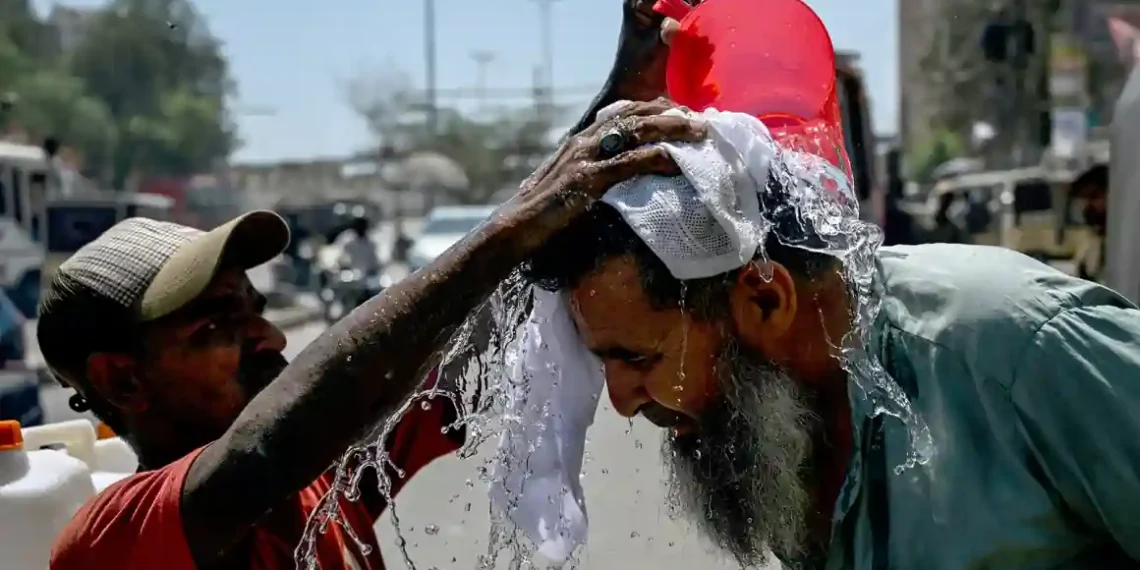Extreme Heatwave in India and Pakistan: A Test of Survivability as Temperatures Soar to Death Valley Levels
In India and Pakistan, an early and intense heatwave has set in, threatening the livelihoods of hundreds of millions of people and pushing the region’s survival limits. What typically starts as a seasonal concern in May and June has arrived earlier than expected, and experts predict it will last much longer, creating a devastating impact on energy supplies, agriculture, and public health.
As temperatures across both countries climb to dangerous levels, the heatwave is already surpassing expectations. In Pakistan, the heatwave has caused temperatures to rise by 8°C above normal, with Balochistan in the southwest bracing for temperatures that could reach 49°C (120°F) between April 14-18 — a level akin to Death Valley, North America’s hottest place.
Ayoub Khosa, a resident of Dera Murad Jamali in Balochistan, described the heatwave’s intensity as something that caught many by surprise, further exacerbated by severe power outages that last up to 16 hours daily. These outages have intensified the already unbearable conditions, making it harder for residents to cope.
Neighboring India is not spared. The heat arrived ahead of schedule, and the country’s meteorological department warns that the heatwave season will bring an “above-normal number of heatwave days.” New Delhi, with its population of over 16 million, has already seen temperatures surpassing 40°C (104°F) three times in April, up to 5°C above the seasonal average. Other regions, including Rajasthan, are experiencing similar extremes, with temperatures reaching 44°C (111°F).
Anita Soni, from Thar Mahila Sansthan, a women’s group in Rajasthan, expressed concern about the heat’s effects, particularly on women and children. Farmers and laborers, working in the oppressive heat, are already experiencing heat-induced illnesses like dizziness, vomiting, and dehydration. Farmer Balu Lal described the unbearable working conditions, stressing the concern over how the extreme temperatures are affecting the crops and the livelihoods of those dependent on them.
This prolonged heat is more than just an inconvenience — it’s a life-threatening situation. The extreme conditions are pushing the limits of human survivability, with experts warning that by 2050, India could become one of the first places where temperatures surpass human survivability thresholds. In past decades, extreme heat has claimed tens of thousands of lives, and the toll is expected to rise dramatically in the coming years.
Pregnant women, in particular, are at severe risk. Neha Mankani, an advisor with the International Confederation of Midwives in Karachi, warned that extreme heat increases the risk of pregnancy-related complications, including preterm births and pregnancy-induced hypertension, which can lead to preeclampsia — a leading cause of maternal mortality.
India and Pakistan, already struggling with economic disparities, are predicted to be among the hardest-hit countries by climate change. With over a billion people at risk, the cascading effects of rising temperatures will have far-reaching consequences. Experts like Mehrunissa Malik, a climate change and sustainability consultant in Islamabad, stress that the worst-hit will be communities that lack access to cooling systems, proper housing, and basic resources for survival.
Farmers, in particular, are feeling the heat. Malik noted that crops are vulnerable to the early heat, which can disrupt planting cycles, reduce yields, and increase the need for water during a time of severe drought. The erratic weather patterns — from droughts to heavy rainfalls — are making farming increasingly unpredictable, with pests and diseases devastating crops.
Tofiq Pasha, a farmer and environmental activist from Karachi, explained how temperatures are affecting crops, with flowers and fruits failing to set, leading to widespread crop loss. The lack of rain in Sindh, coupled with early heat, is creating a water shortage, further threatening food production.
As the heatwave rages on, energy demand has surged. The increased demand for electricity has led to coal shortages, and millions are left without power. In some areas, trains have been canceled to conserve energy, and schools have had to close, disrupting learning for children across the region.
The devastating effects of this extreme heatwave serve as a stark reminder of the urgency of addressing climate change. As the region grapples with these unprecedented temperatures, both India and Pakistan face the pressing need for sustainable solutions to ensure the safety and well-being of their populations.
The clock is ticking, and without drastic action to combat climate change, the region’s survival in the face of extreme weather events remains uncertain. The world is watching, and the response to this growing crisis will shape the future of millions of people living in the heat’s unforgiving grip.
This article was rewritten by JournosNews.com based on verified reporting from trusted sources. The content has been independently reviewed, fact-checked, and edited for accuracy, neutrality, tone, and global readability in accordance with Google News and AdSense standards.
All opinions, quotes, or statements from contributors, experts, or sourced organizations do not necessarily reflect the views of JournosNews.com. JournosNews.com maintains full editorial independence from any external funders, sponsors, or organizations.
Stay informed with JournosNews.com — your trusted source for verified global reporting and in-depth analysis. Follow us on Google News, BlueSky, and X for real-time updates.














